Moving into the main portion of my route in Thailand, I hoped for continued good results for adding sightings of new bird species. That generally came to pass, but there were some issues that forced me to bypass a few very promising areas. I had intended to ride to the northern city of Chiang Mai, which is surrounded by several mountainous hotspots where a number of small, but beautiful, species more typical of the Himalayan region can usually be easily seen. Unfortunately, pandemic closures in that region, including the main National Parks, took hold while I was still in the south, and so I had had to forego that opportunity and instead rode to the eastern part of the country, where the possible birds would be mostly similar to the parts of country that I had already experienced. In that direction there would not be any real hotspots for almost a month, but despite that I was satisfied by being able to add new species, here and there, at a generally rapid pace, with many of those being very desirable species.
One fine example came early one morning, just as I had started the day’s ride, Racket-Tailed Treepie,…
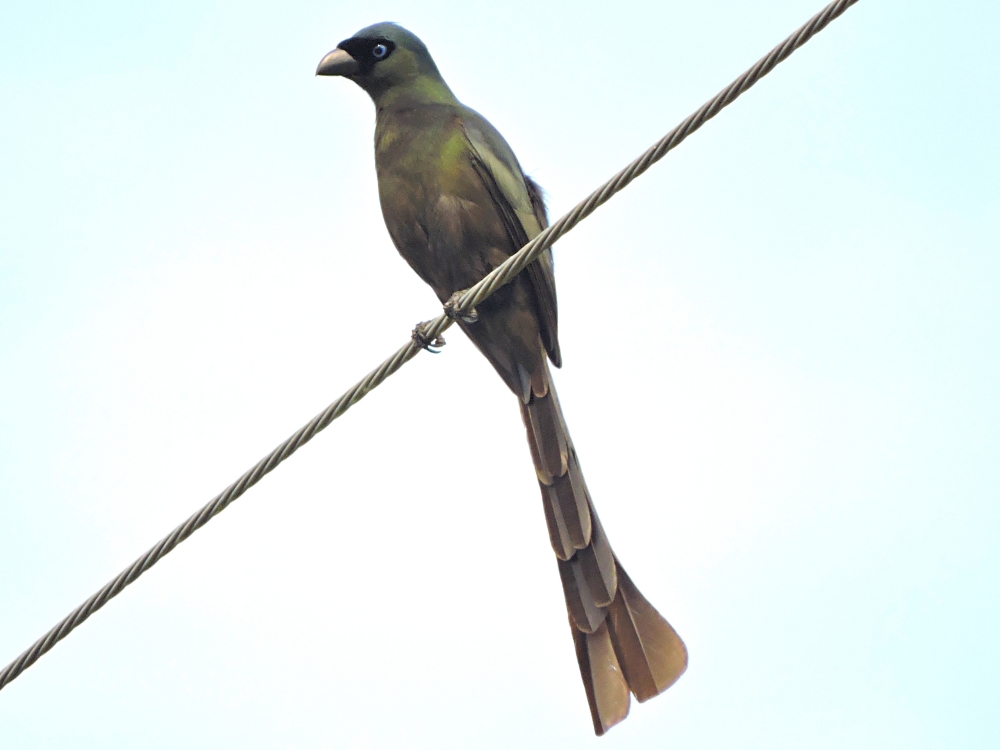
…and nearby, on the previous evening, I added Coppersmith Barbet.
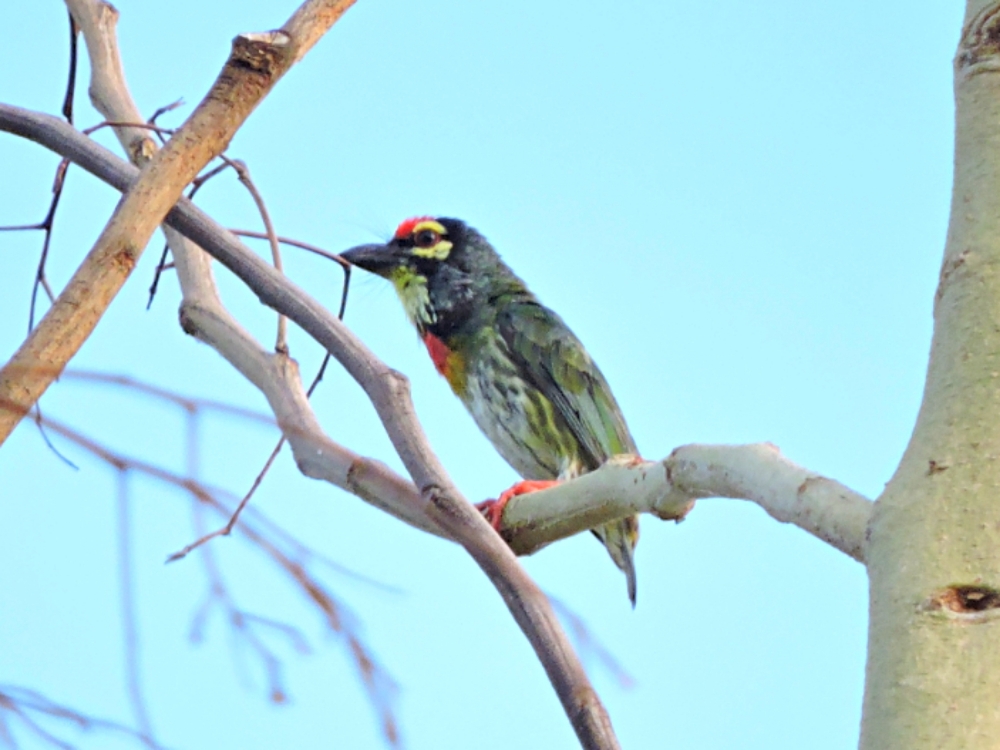
Continuing north, on successive days I had two fun examples of the Oh, wait, there’s a…
phenomenon, where, while trying to get a good view of some fairly common bird, a much more interesting species became apparent, sitting nonchalantly in the same tree. One was an often tough-to-see species, Golden-Fronted Leafbird,…
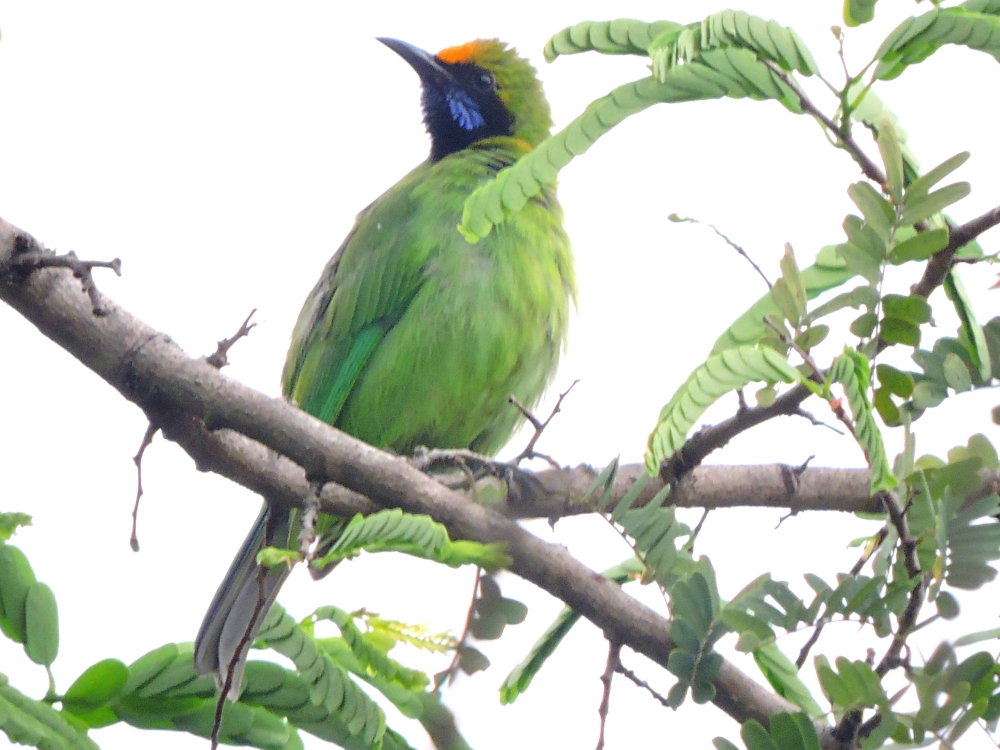
…and the next morning I was pleased to see Black-Headed Woodpecker.
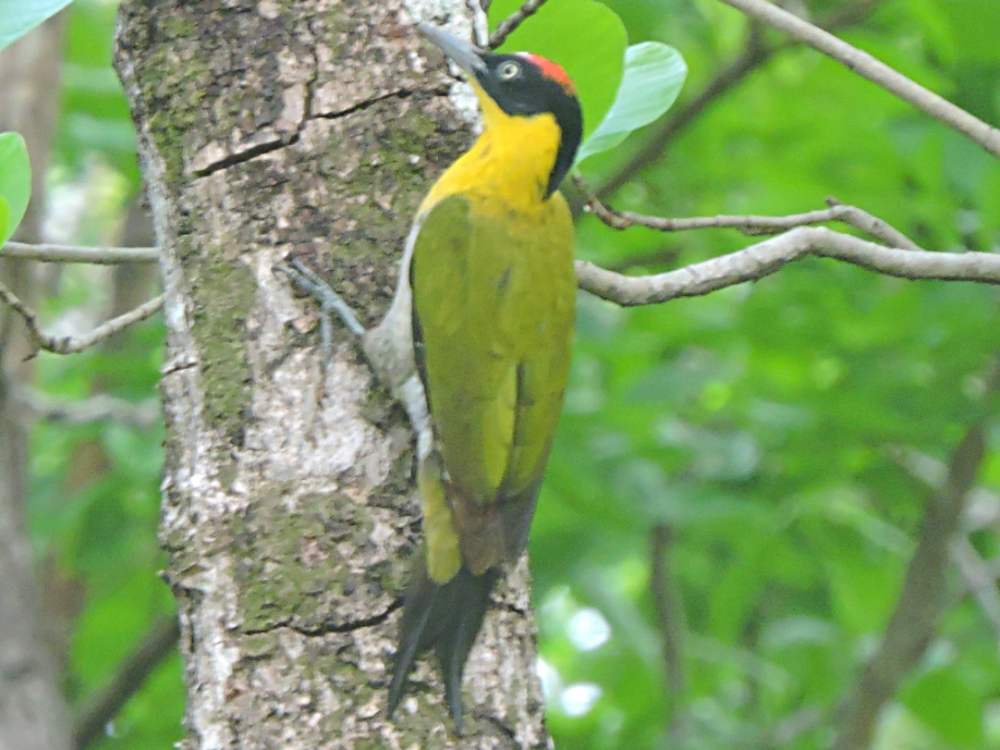
During that period of time I continued to pick up nice birds, one at a time, in a variety of habitats, they were, Chinese Pond Heron, Greater Sand-Plover, Lineated Barbet, Stripe-Breasted Woodpecker, Green-Billed Malkoha, Horsfield’s Bushlark, Gray-Eyed Bulbul, Richard's Pipit, Rufescent Prinia, Golden-Headed Cisticola, and Plain-Backed Sparrow.
I have already written about the untimely closure of Huai Khaeng Wildlife Sanctuary, and that eliminated another promising spot where I hoped to have good results. Fortunately, the buffer zone forest just outside the park was rather birdy, and I made two good observations there, White-Crested Laughingthrush,…
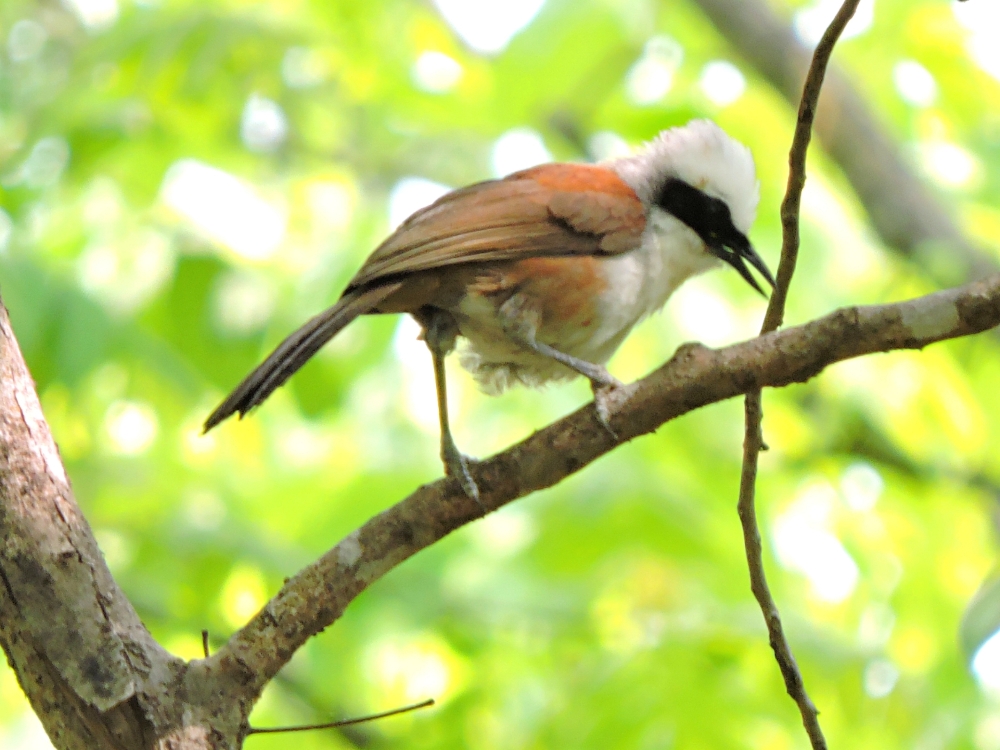
…and Red-Billed Blue Magpie.
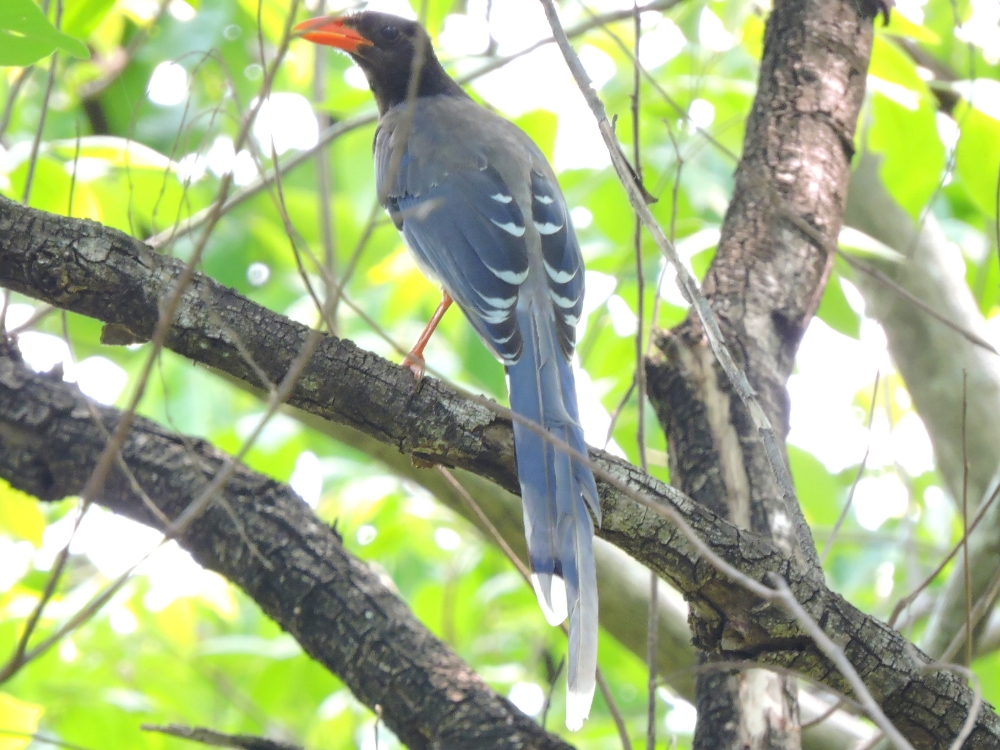
That was also the point that I needed to reroute to the east instead of continuing to Chiang Mai, and so my focus then shifted to a number of water-associated species that I had yet to see. My first stop was the lake and wetland known as Bueng Boraphet, near Nakhon Sawan, but the water level was too low for the boat-based observation tours that are needed to see the most birds, so I only managed two new birds, Yellow Bittern and Yellow-Bellied Prinia.
Continuing forward I was eventually able to add the two jacanas of Thailand, Bronze-Winged Jacana,…
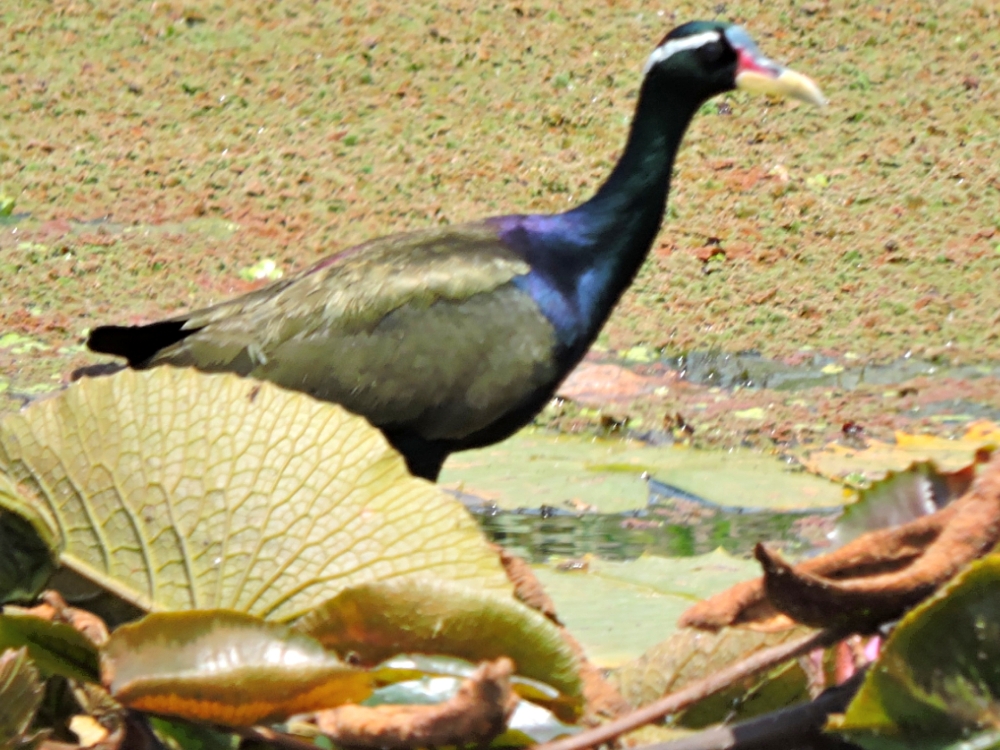
…and the very nice Pheasant-Tailed Jacana. I felt that I should have seen both of these species on my previous tour in the country, however there are many thousands of lily-covered ponds and paddies in that area, their preferred habitat, and, after scanning a great number of them, I now understand that their distribution is rather patchy.
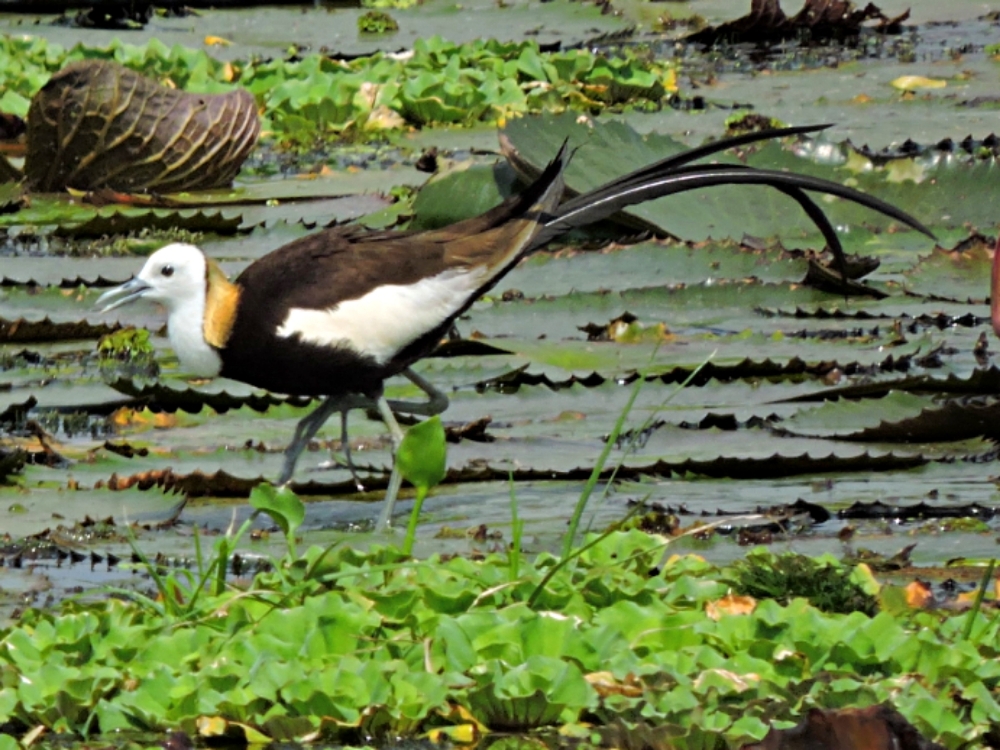
Other birds seen along the route in that area were White-Browed Crake, Gray-Headed Swamphen, Cinnamon Bittern, and Brown Prinia. When I reached two of the most-birded lakes in the area, I was able to see a couple of species that were important targets. In Africa, I frustratingly dipped on a species I really wanted to see, African Pygmy-Goose, so it was a nice consolation to add its cousin, Cotton Pygmy-Goose.
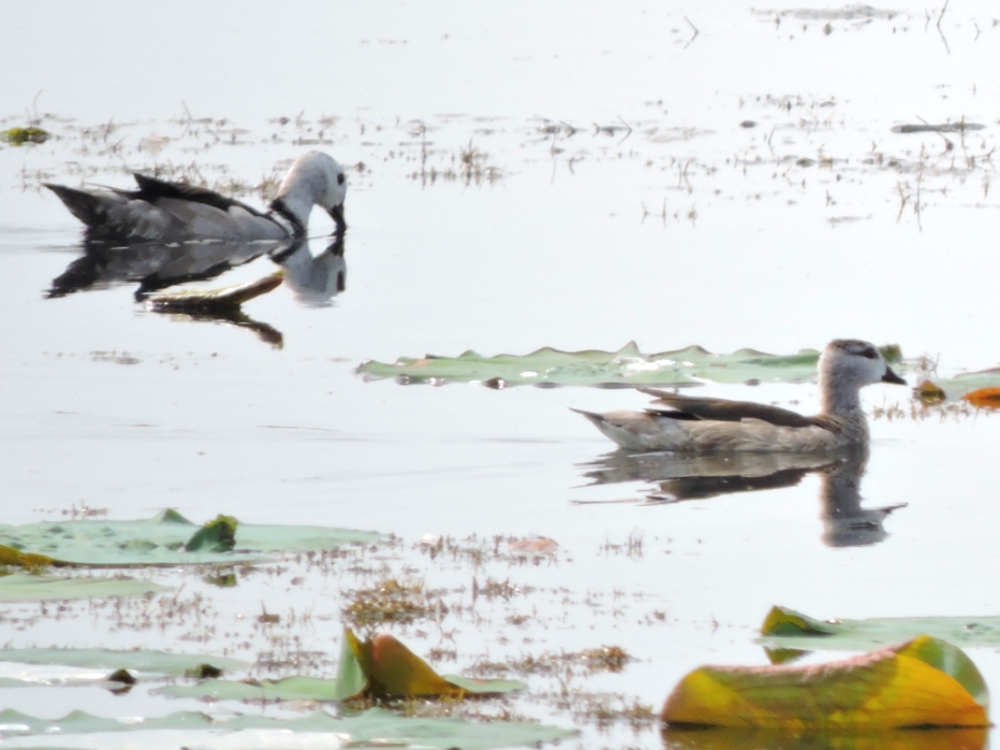
Another bird I wanted to see, Oriental Pratincole, was breeding in a colony near the second of those lakes, and it is one of the few species that gets two images here, since when I wandered near the nesting site I was able to briefly see its broken wing display.
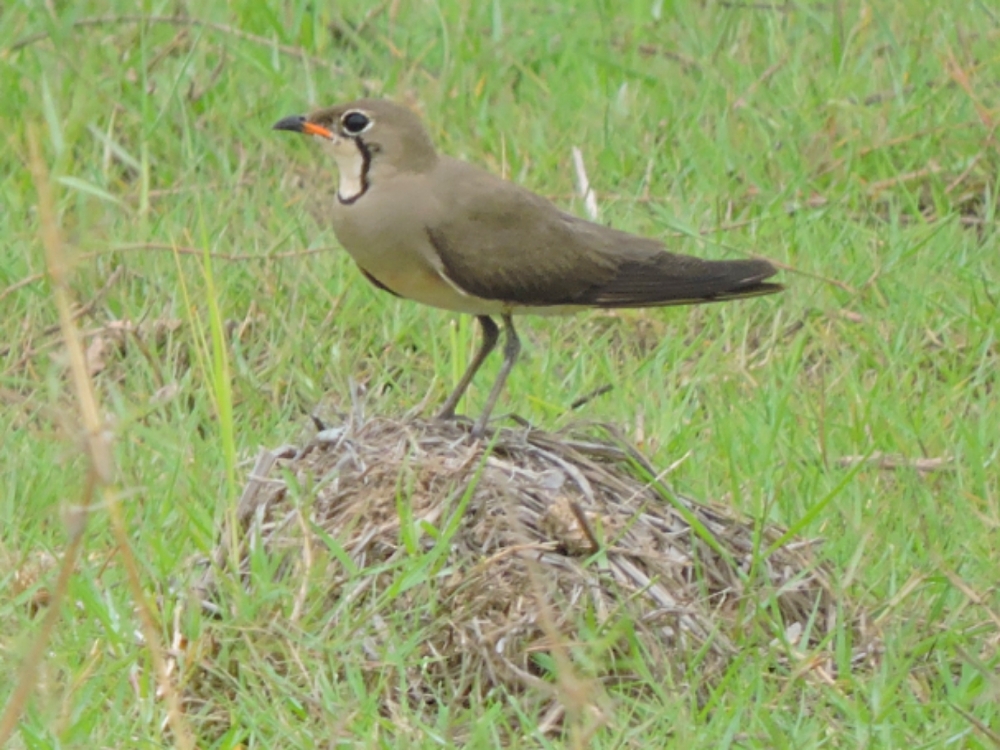
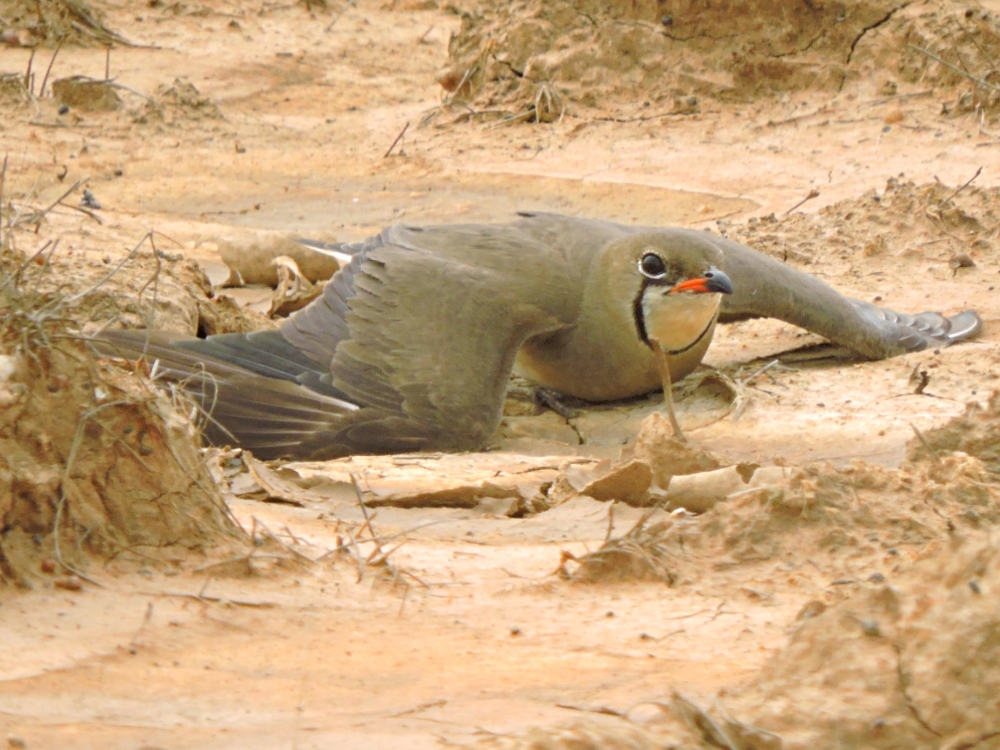
From that point, I started circling back towards Bangkok, and I anticipated that I might experience a dry spell in terms of new sightings for a while. That certainly turned out to be the case, with only one new species seen during a two week period, Black-Collared Starling. However, I was not too concerned, because I still had one more hotspot left to visit. Khao Yai National Park is one of Thailand’s most popular parks and is also a World Heritage Site. Accordingly, it was a place that I visited during my previous tour. However, as a relative novice, I saw only one or two new birds at the time. Therefore, I certainly didn’t mind returning this time for what would hopefully be a better result.
After a relatively short, but hot and very draining, tour in the country, I decided to make this visit a little longer than normal, staying in the vicinity for three full days, which would hopefully also give me the best chance to see some of the nicest birds. I stayed just outside of the northern entrance to the Park, which is where the majority of the accommodations and services are located (there are some bungalows and campgrounds inside the park, but under the circumstances at the time I couldn’t confirm if they were open.) My original strategy was to ride into the Park for a full day, search for as many of the best birds as possible, return to the north side, and then ride all the way through to the south on the following day, keeping an eye open for anything I might have missed. Eventually, I thought better, primarily because to get from the entrance to the main birding sites in the center of the Park involves a four hundred-meter climb, which is a little steep in a few places. Ordinarily, I wouldn’t be put off by that rather modest climb, but it would have cut into the time available for birding considerably, and, given the heat and humidity at the time, I really wasn’t looking forward to doing that twice on consecutive days.
I had so far been pleased with myself for finding many of the birds I wanted to see on my own, but in this case it seemed like a better idea to try and go with a birding guide. Fortunately, my hotel was able to connect me with Mr. Nine from Greenleaf Guesthouse and Tours, a talented birder who speaks English well, and who was available on short notice for a day of birding at an affordable rate. Once we got started, it didn’t take long to start seeing nice birds, including Scarlet Minivet.
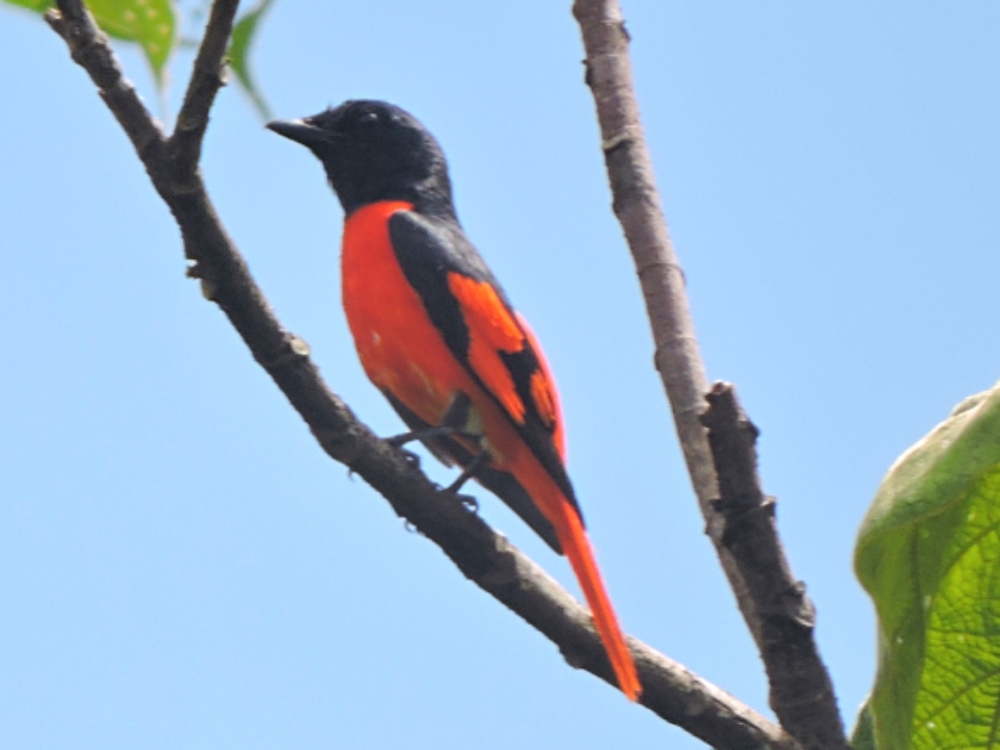
There were a few species of barbets possible, but Moustached Barbet would only pose from within its hole.
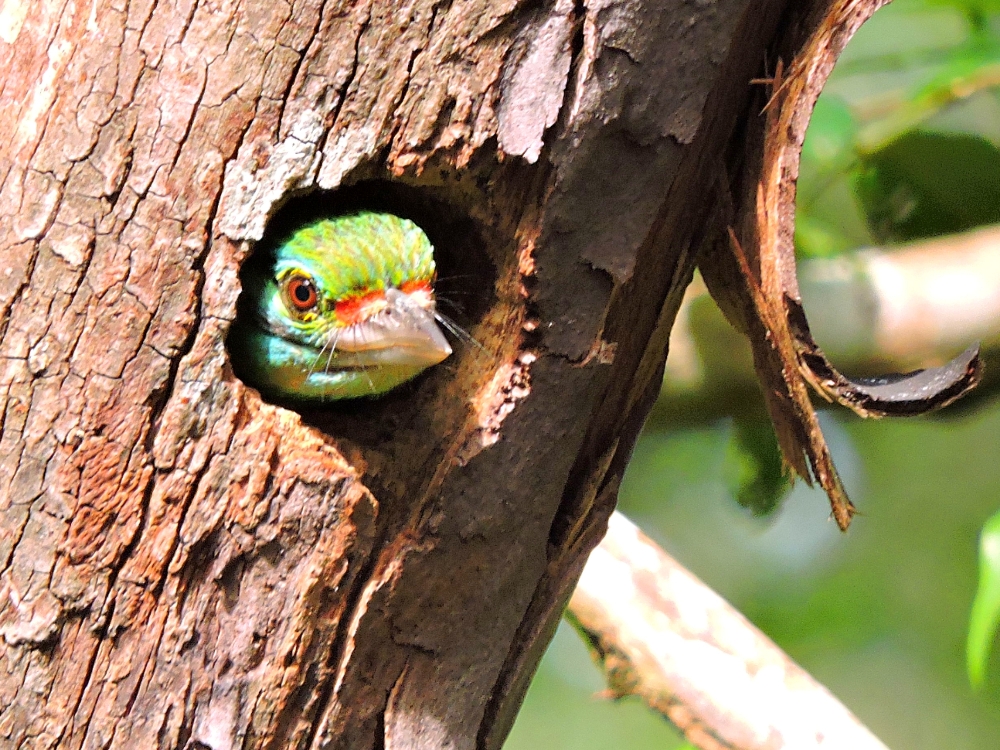
One of my top targets, which I had missed in Kaeng Krachan, was a member of an Asian family containing only two species, Asian Fairy-Bluebird. They were fairly common in the park, but not very easy to see clearly, or photograph well, so I was happy to get this image.
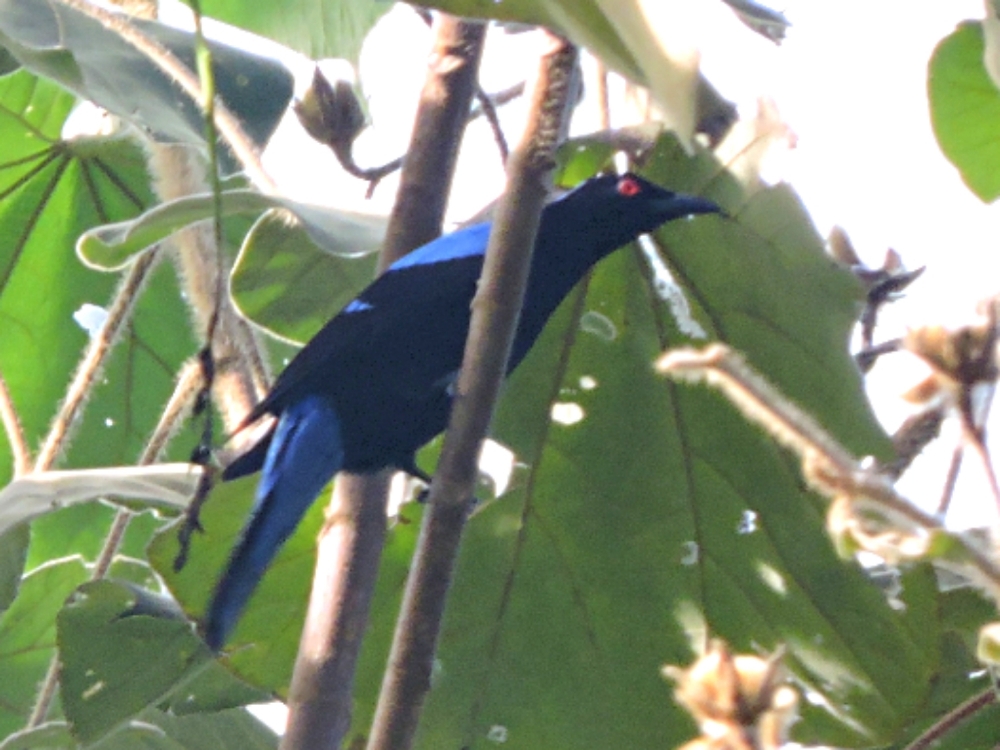
Another spectacular bird, Long-Tailed Broadbill was nesting at numerous locations right over the roadway, so I might have seen them on my own, or perhaps not, since if they aren’t moving they can be easily overlooked.
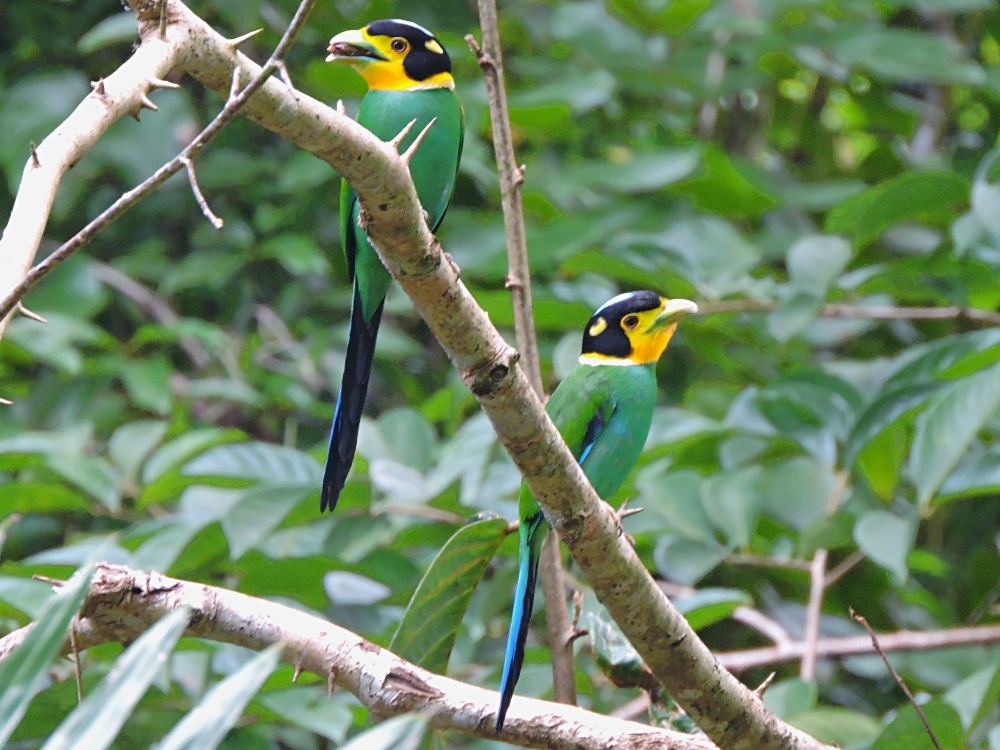
A highlight of the Park are the Hornbills, and I saw three great examples that day, starting with the very impressive Wreathed Hornbill.
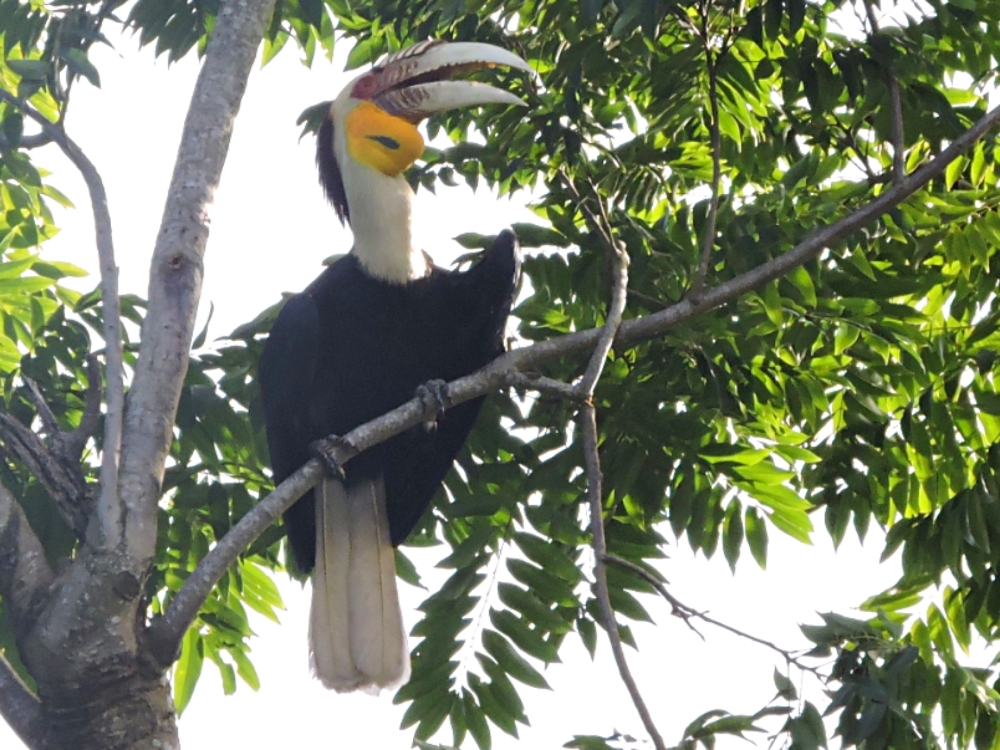
Two of the species were large and noisy, so I may been able to locate them myself, but I was fortunate to be with Mr. Nine, as he knew the stakeout location for the much less common Austen’s Brown Hornbill. A family had a nest away from the road and this adult is feeding the chick that has been sealed into the hollow of this tree.
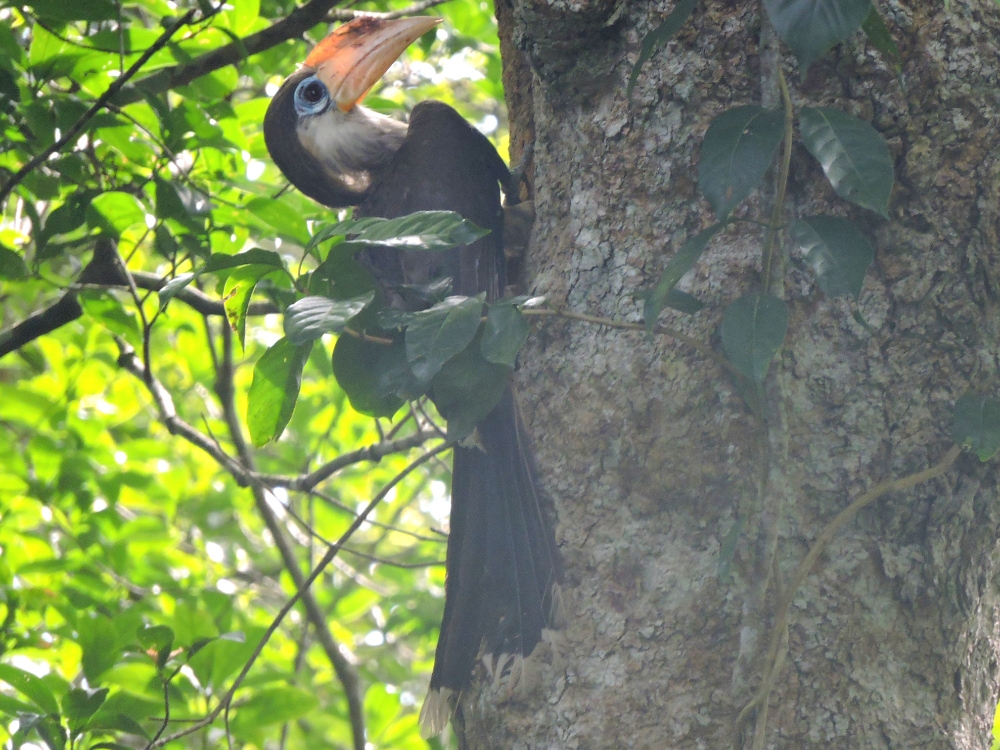
One of the more impressive birds I have seen on the Tour was Great Hornbill. I had previously reported a sighting at Kaeng Krachan, but after seeing this amazing individual, I now question whether the bird I had seen before, flying across a road, might have been another species. I certainly appreciated the opportunity to firm up that species on the Tour list.
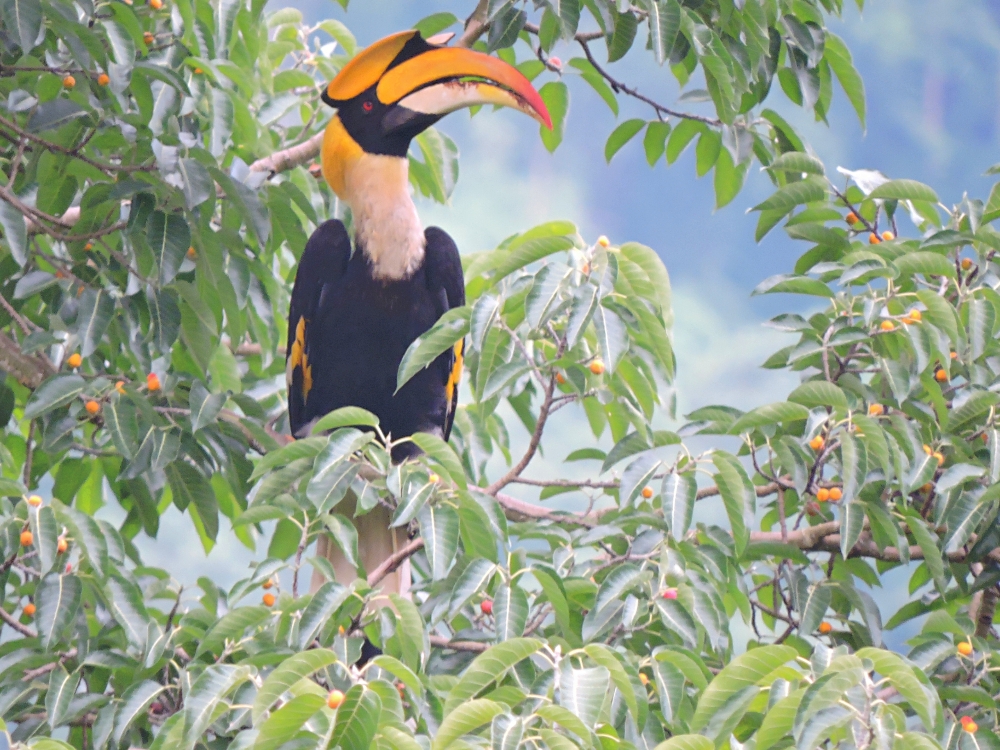
We also observed handful of other species that day that were not well photographed: Blue-Bearded Bee-Eater, Laced Woodpecker, Great Iora, Ashy Bulbul, Black-Throated Laughingthrush, and Puff-Throated Bulbul. When I finally did ride through the Park to the south gate, there were some birds around, mostly the more common varieties and some that were already seen on the first day, but it was much quieter overall. The only new bird was Large Hawk-Cuckoo, which teased me for a long time by calling loudly, but invisibly, from the top of a tall tree (so loudly that for a while I thought it might have been a monkey,) before finally flying directly overhead, thus confirming its identification.
After dropping back down to sea level, and covering the relatively short distance back to the vicinity of Bangkok, there were still two species, recently reported in the area, that I wanted to see. Only one cooperated, however, the diminutive, mangrove-loving Golden-Bellied Gerygone, my final bird of the country. Were it not for the numerous closures and my inability to reach the northern region, I may have seen a slightly higher species total, but eighty-nine is a pleasing tally and considerably compensated for my previous deficiencies. Additionally, the fact that many of those species were incredible avian examples provided an increased level of satisfaction. Even more important for me is that with these additions, my one-thousand species goal for the World2 Tour is now almost certain to be achieved. The only question is exactly where, and exactly when, that will happen. My immediate future will soon have me in a somewhat less-birdy region, so it may be a little longer than I might otherwise prefer.